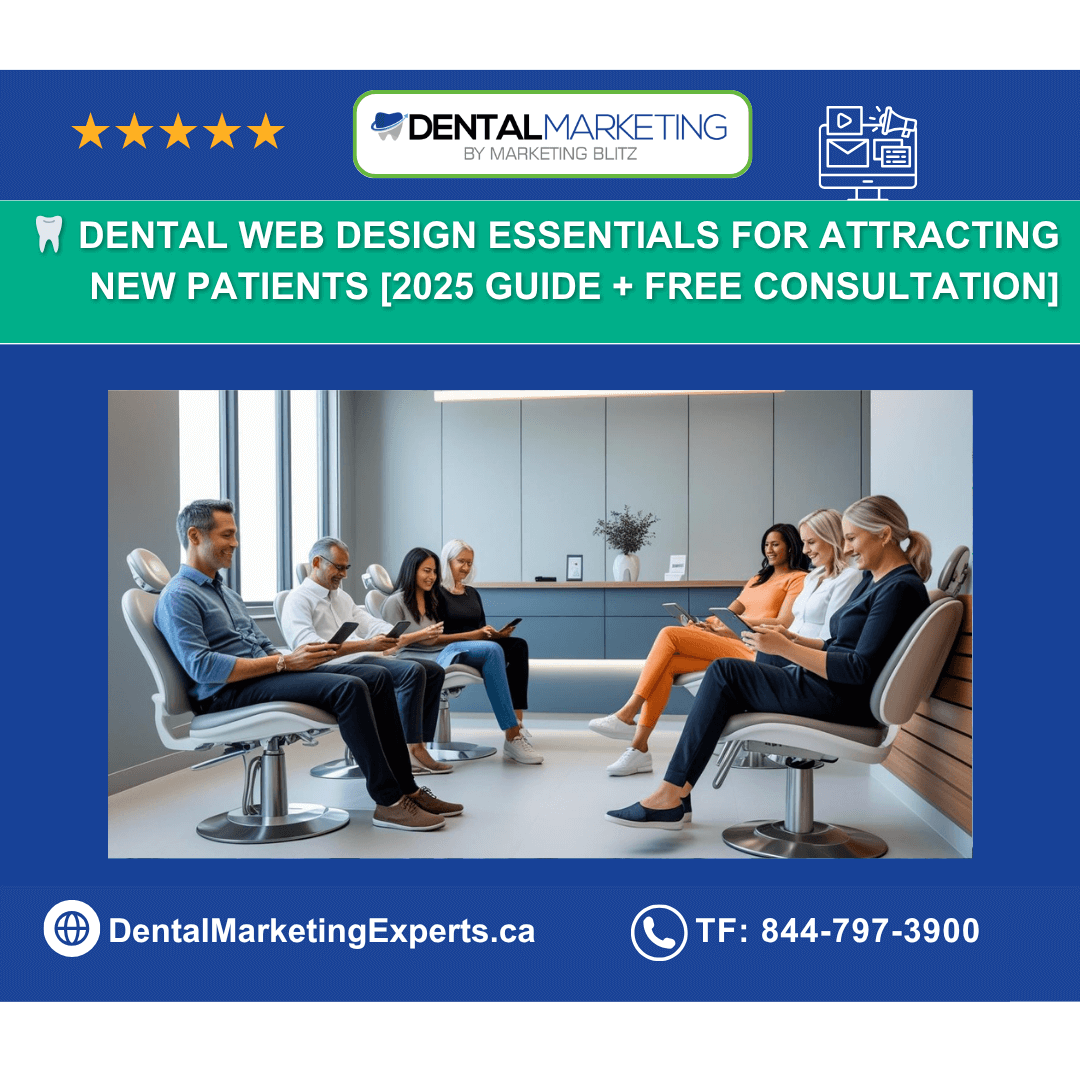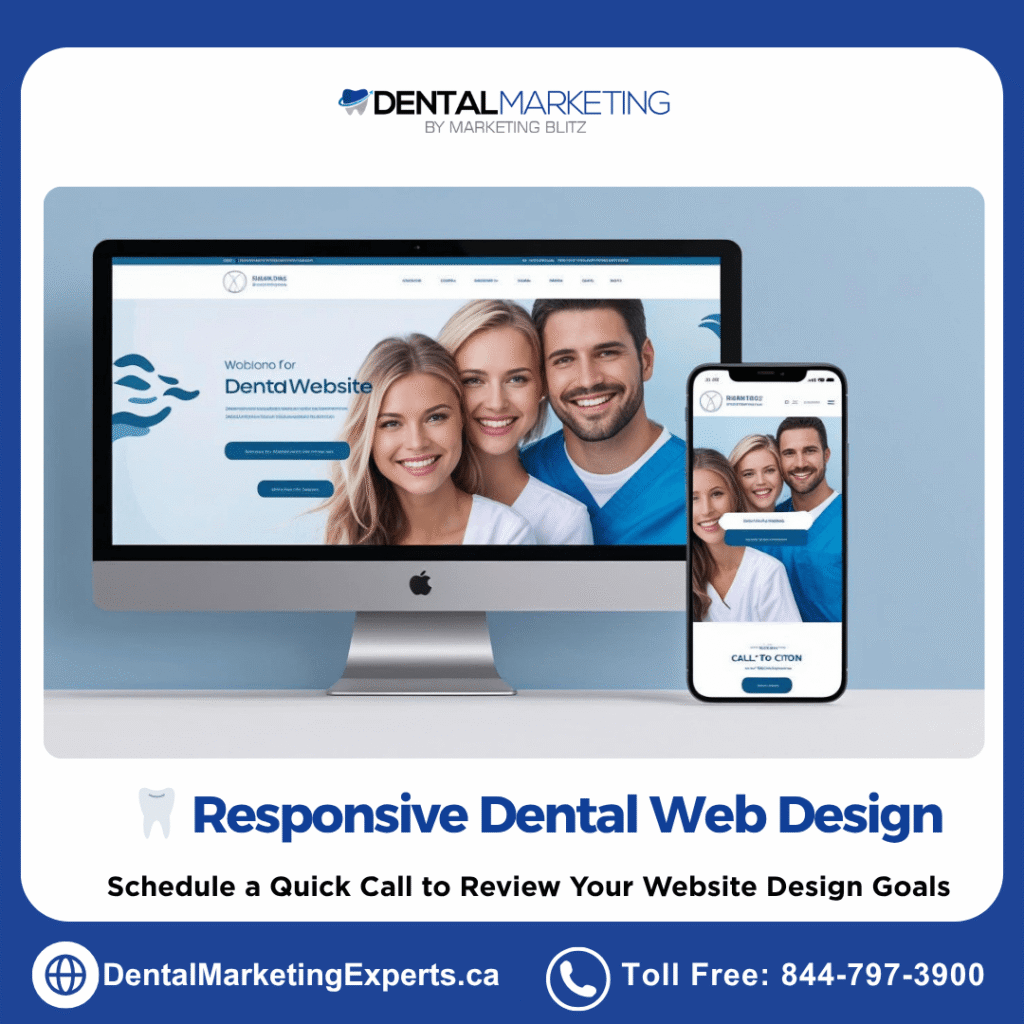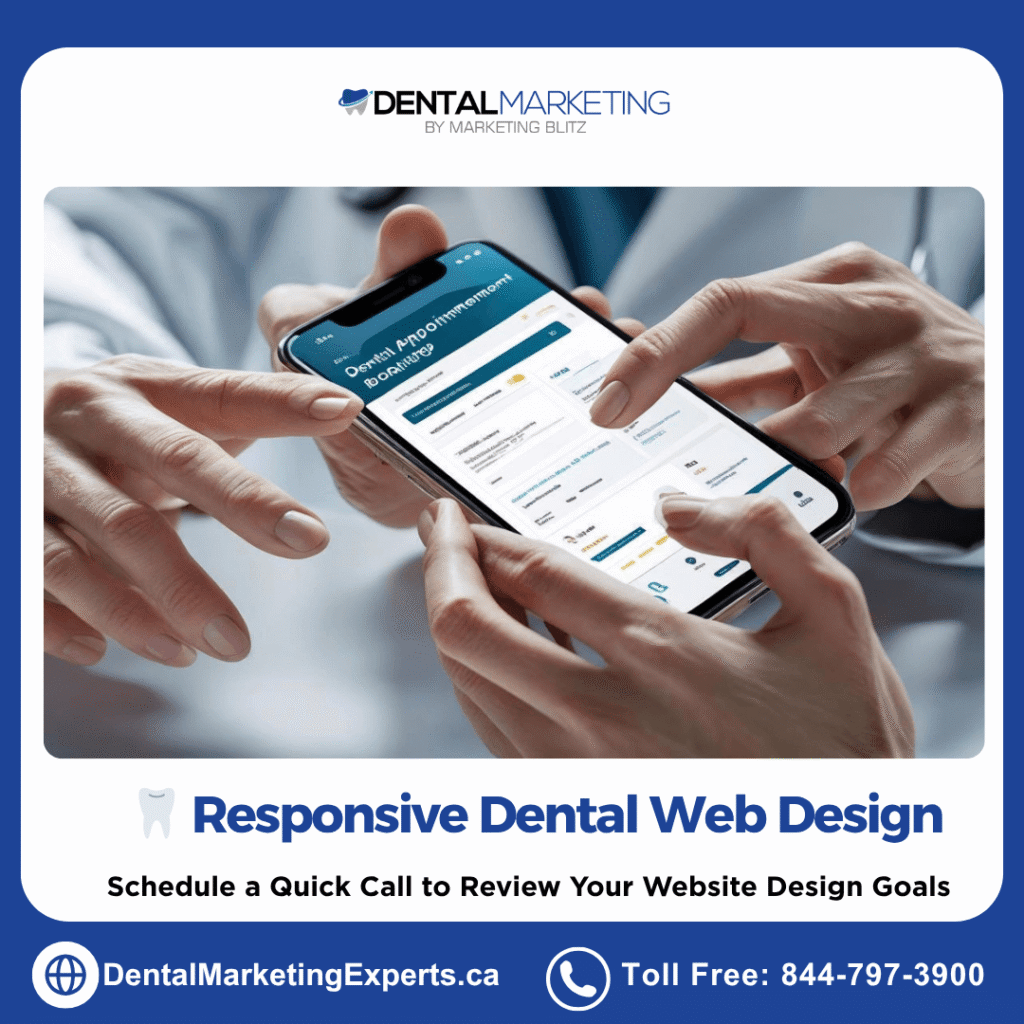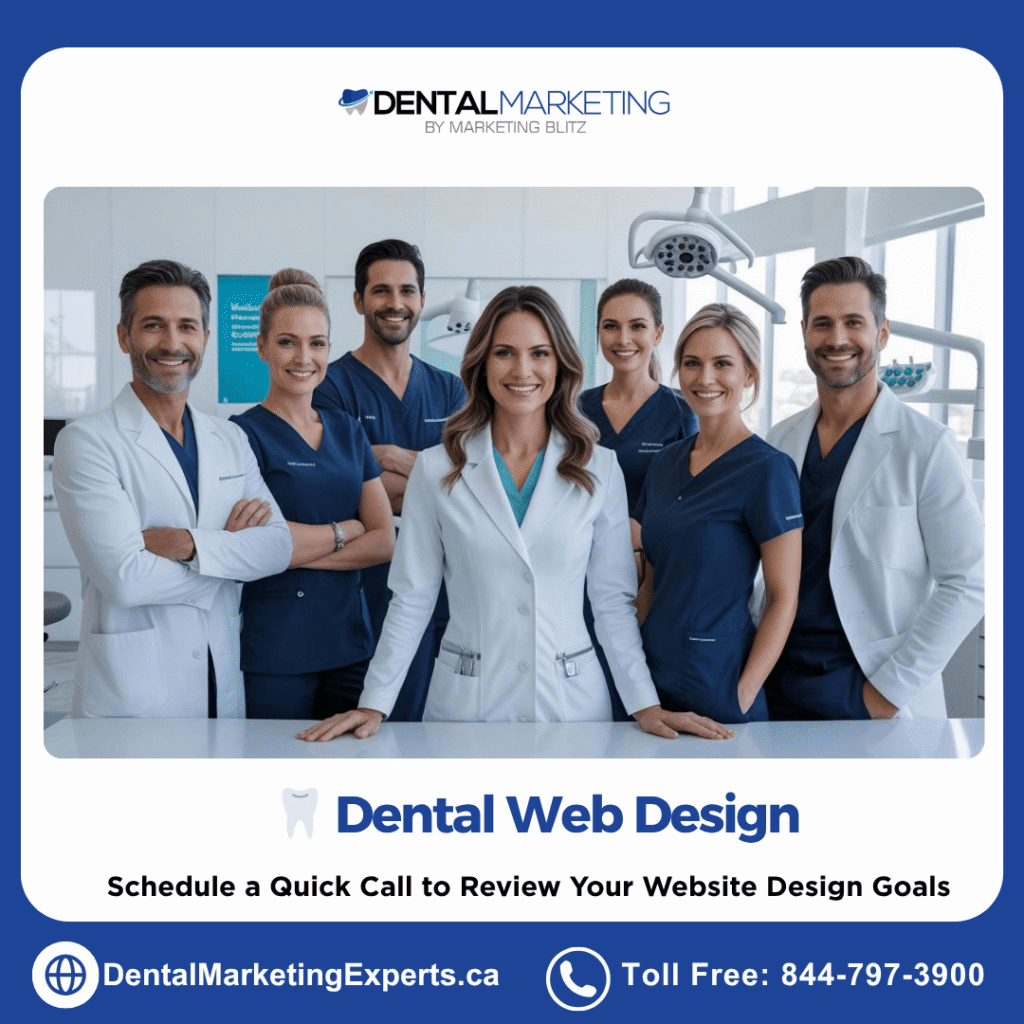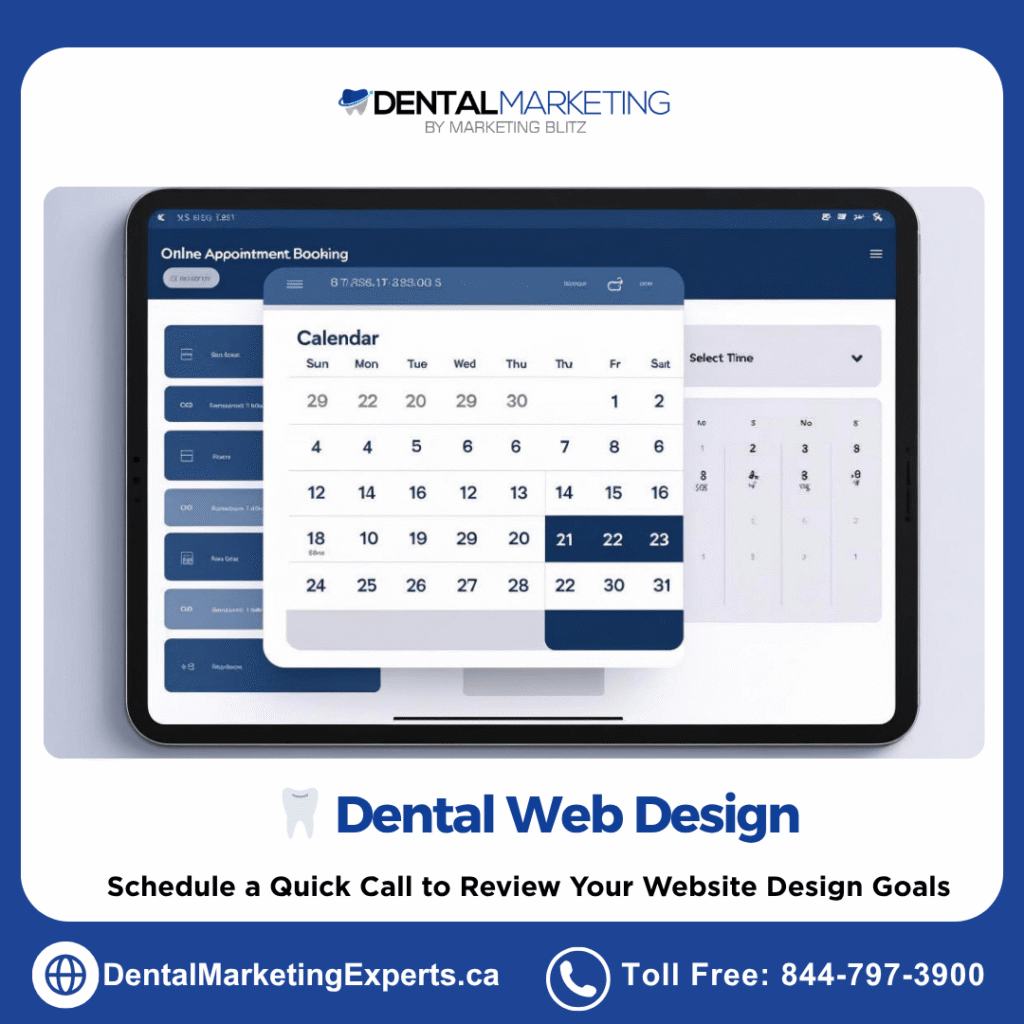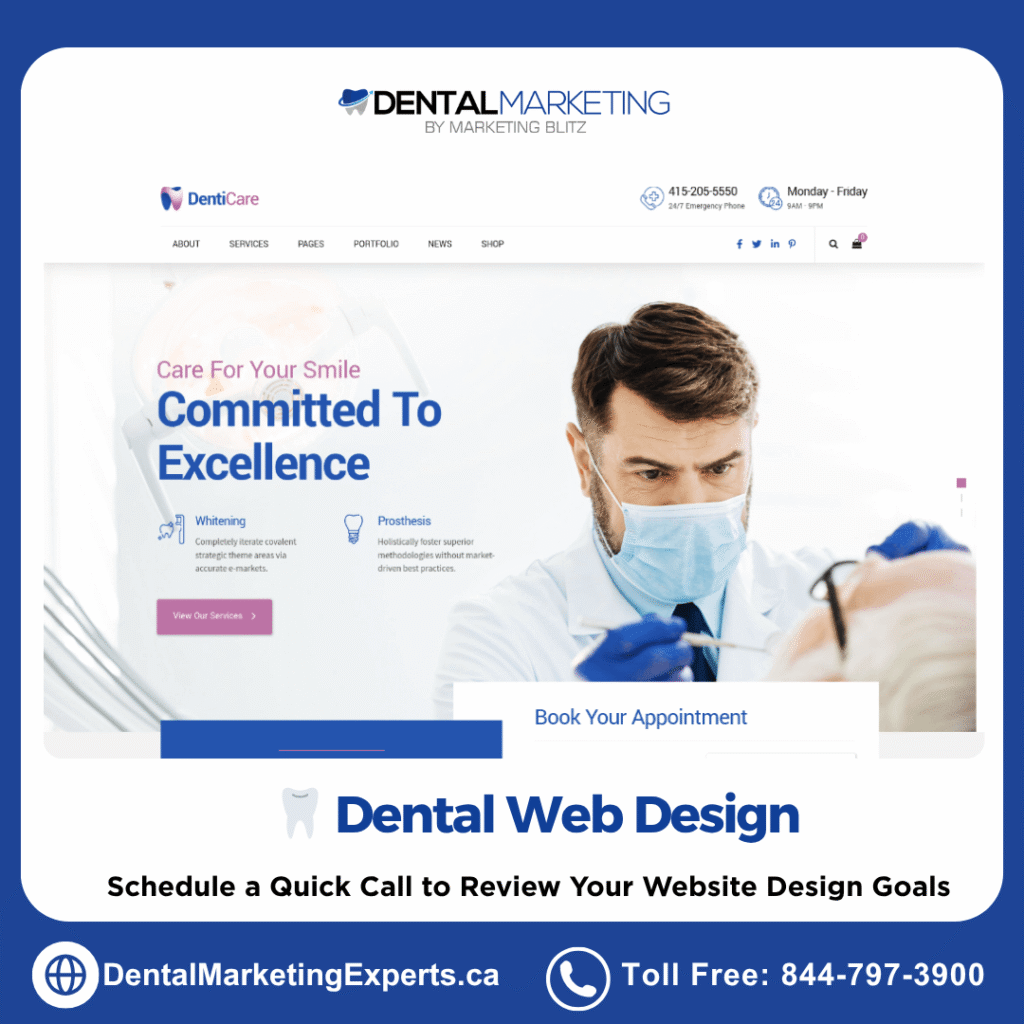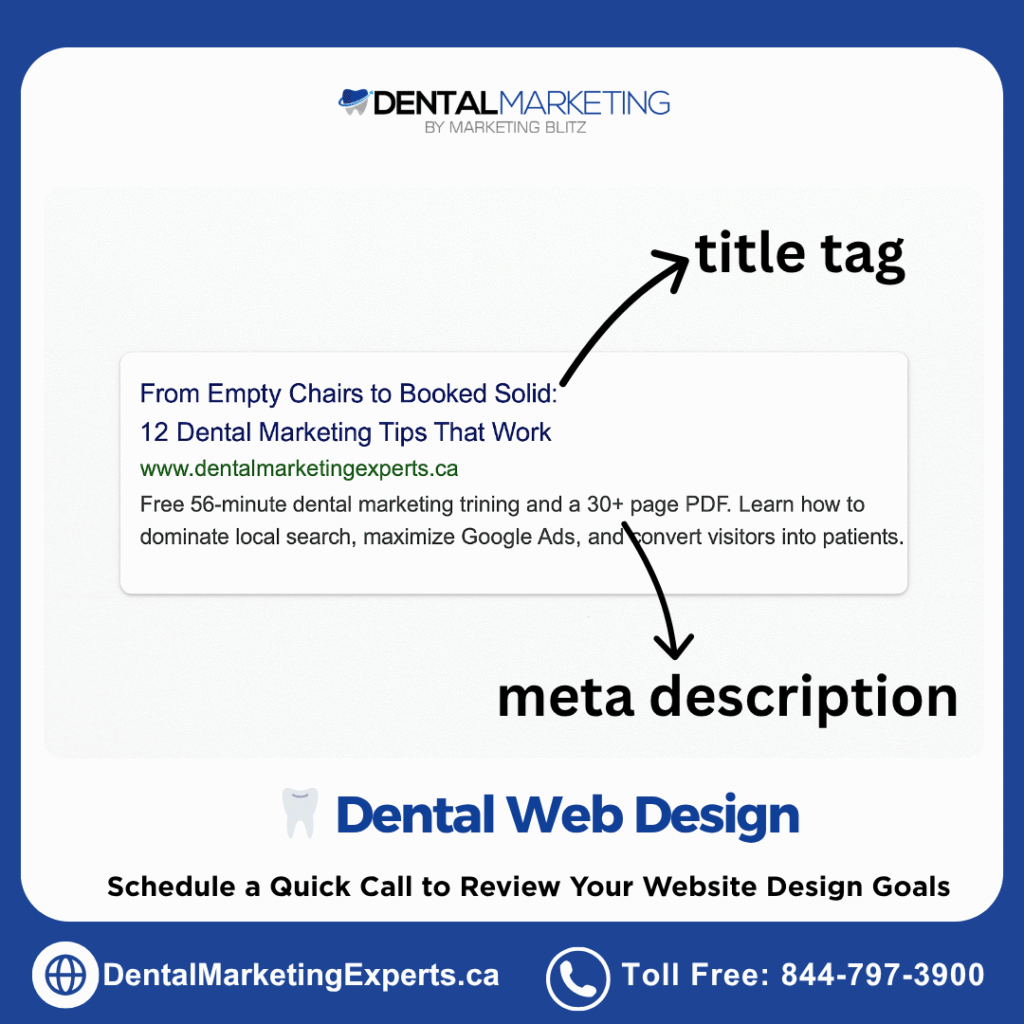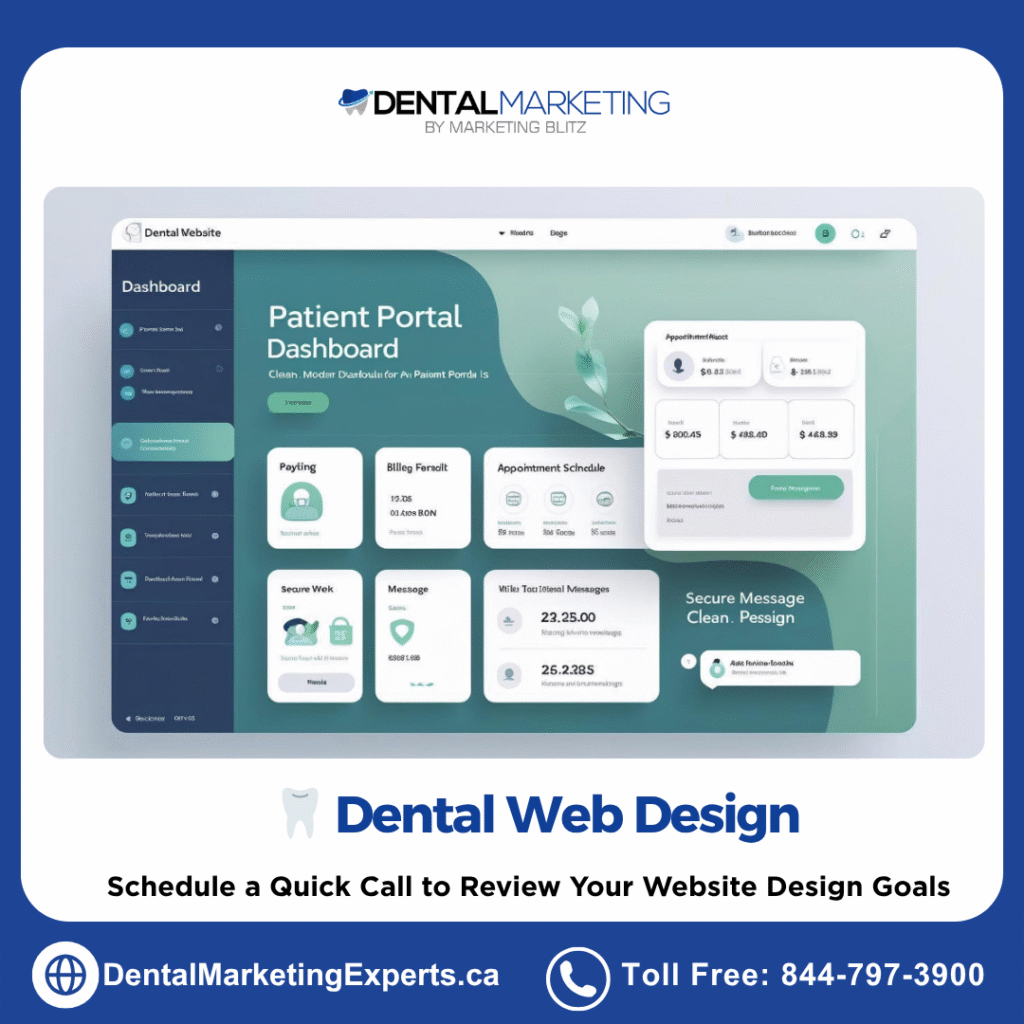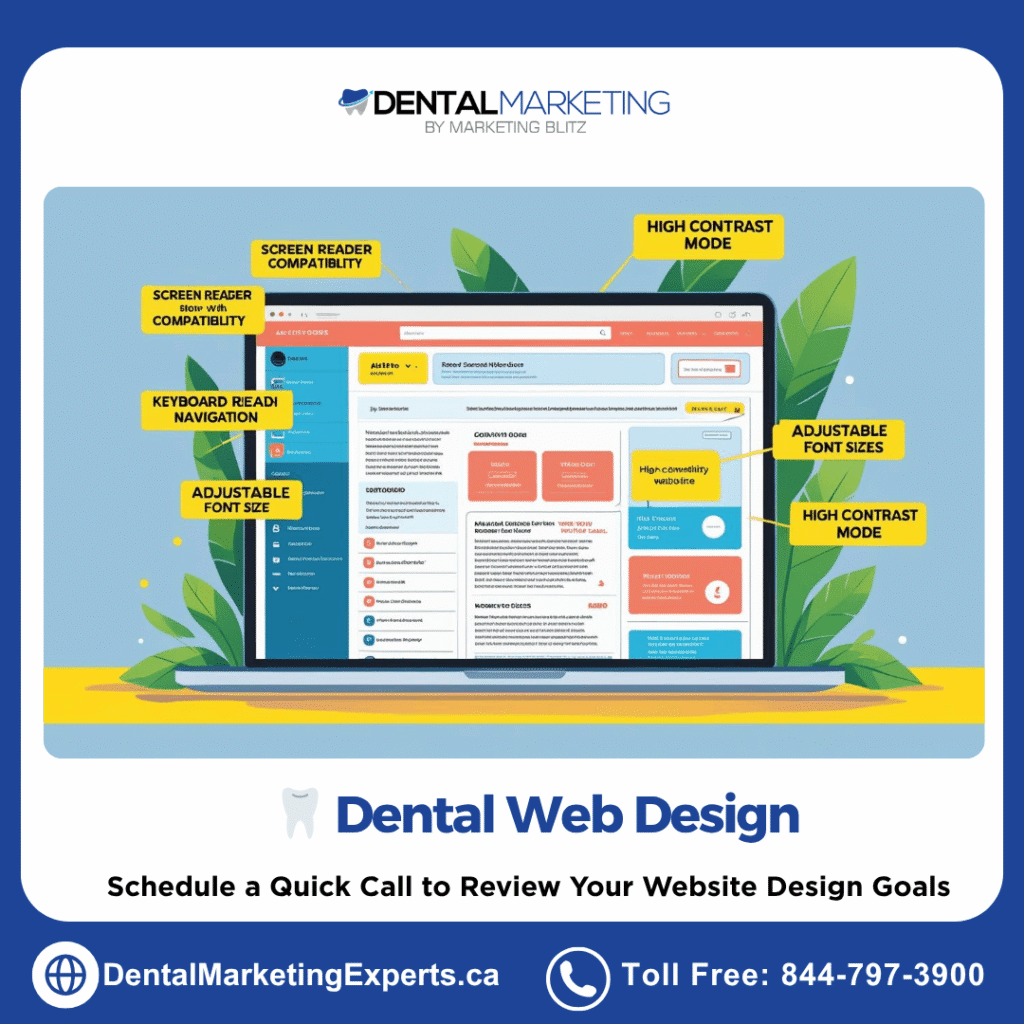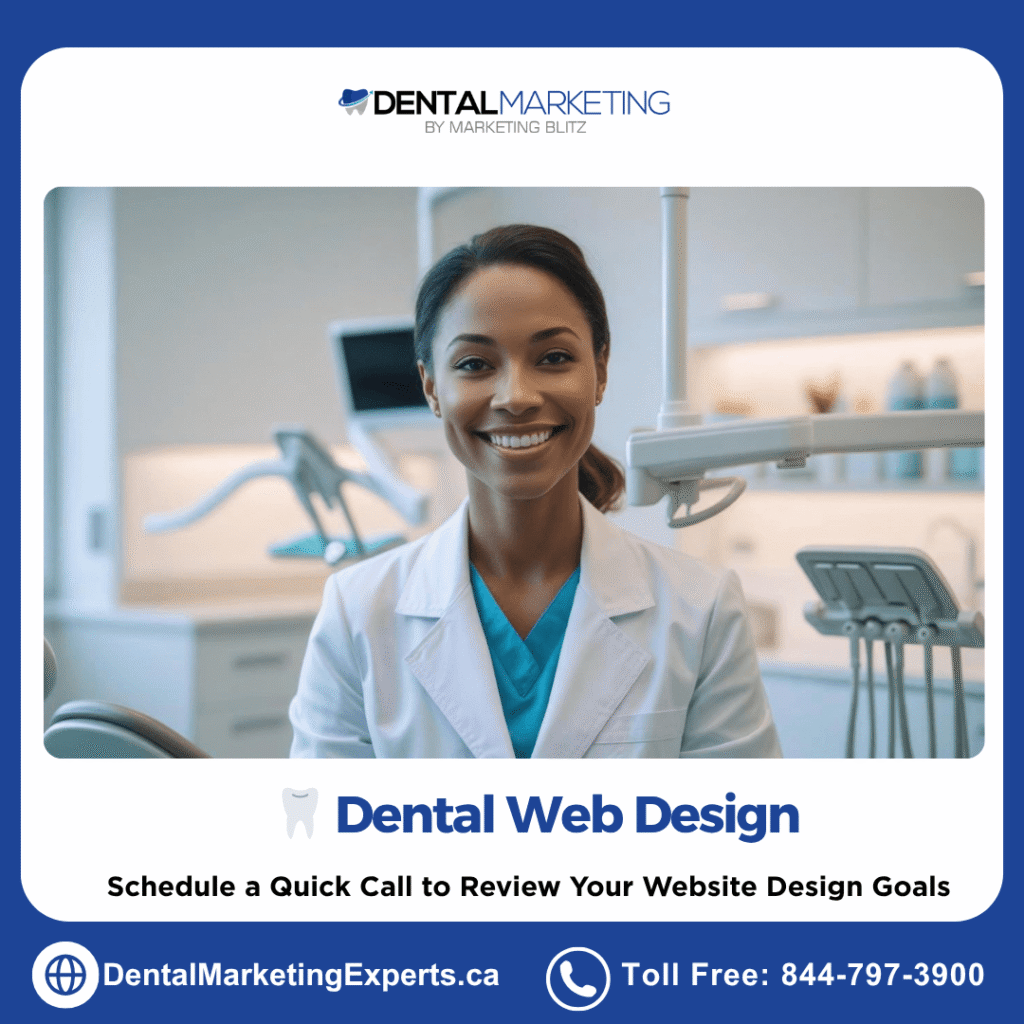Dental Web Design Essentials for Attracting New Patients [2025 Guide + Free Consultation]
Your website is often the first contact patients have with your dental web design.
A modern, easy-to-use design does more than just look good—it helps people find important information fast and makes them feel confident choosing your office.
With so many dental practices online, you need a site that stands out and builds trust right away to attract new patients and drive practice growth.

Dental web design comes with its own set of needs.
You want clear service pages, friendly team bios, and strong calls to action, all backed by easy booking options.
When your website delivers a smooth, welcoming experience, more patients are likely to call or book an appointment.
A well-optimized website platform ensures your practice reaches the relevant audience searching for dental services in your area.
Ready to see how a new site can bring in more patients and boost your reputation?
Reach out to Dental Marketing Expert for a free website audit and 15-minute consultation here.
Essential Elements of Effective Dental Web Design
A dental website should do more than showcase your clinic—it should help visitors book appointments and feel at ease about their dental care.
Every detail, from how the site looks on a phone to how fast someone can get directions, shapes a patient’s first impression and contributes to tangible real results for your practice.
Mobile-Responsive Layouts
Most people visit dental websites from their phones or tablets.
If your website does not automatically adjust to every screen size, patients will likely leave and look elsewhere.
A mobile-responsive layout ensures everyone gets the same smooth experience, no matter what device they use.
Here’s why mobile responsiveness is essential:
- Intentional clicks are easy: Buttons and forms are big enough for fingers, so no one struggles to book an appointment
- Content stays readable: Text and images don’t squish together or run off the page
- Search engine preference: Google prioritizes mobile-friendly sites, helping your practice show up higher in local searches
Responsive design means you stay a step ahead, ready for the next patient who searches for care on the go.
Clean Visual Design and Professional Branding
Your website is your digital front door.
It needs to look sharp and feel inviting from the first second.
Consistent branding uses your logo, colors, and fonts to connect every page and reassure visitors they’re in the right place.
A clean design means:
- Simple, easy-to-read text: Patients want quick answers without digging through clutter
- Professional photos: Images of your team and office help build trust and put a face to your practice
- Patient-friendly layout: Clear menus and smart use of white space keep pages from feeling busy or overwhelming
Every design choice, from the shade of blue you use to the photos you post, helps people feel good about choosing your team for their care.
Dental copywriters often emphasize the importance of visual consistency in building patient trust.
Patient-Focused Content and Strategic Calls to Action
Patients visit your website to solve a problem or answer a question.
If your site makes it easy to find what they need and gives clear next steps, you win more bookings.
Your content should address the needs of both general and specialist practices.
Best practices for content and CTAs include:
- Answer common questions: Service descriptions, insurance details, and FAQs written in plain English build trust
- Organize information logically: Use headings, short paragraphs, and bullet points so visitors can scan pages quickly
- Clear, visible CTAs: “Book Now,” “Call Today,” or “Ask a Question” buttons help guide patients where you want them to go
- Address patient needs: If you treat kids, mention family-friendly care. For anxious patients, talk about sedation options or pain-free treatments
Strong, patient-focused content gets patients from your homepage to your appointment book with less friction.
Streamlined Appointment Booking and Contact Features
The easier you make it for someone to reach your office, the more likely they are to call or book.
Busy patients expect quick action without barriers.
Modern online booking systems have significantly improved patient retention rate by making it convenient for patients to schedule follow-up appointments.
Top features your dental web design should have:
- Digital booking forms: Patients can schedule visits 24/7, with no phone tag
- Click-to-call on mobile: A single tap instantly connects the patient to your front desk
- Maps and directions: Built-in location features and links to Google Maps help visitors find your office fast
- Contact forms: Offer quick ways for patients to leave a question or request a callback
A dental site that feels modern and convenient wins over tech-savvy patients and makes life easier for your staff.
Trust Signals: Reviews, Certifications, and Before & After Photos
People want proof that your practice delivers great results and treats patients well.
Trust signals calm nerves and make new visitors feel safe before they take the next step.
Practices with a proven track record displayed prominently on their websites see higher conversion rates.
Key trust signals for dental web design:
- Patient reviews: Showcase real testimonials from happy patients to calm fears and show genuine satisfaction
- Professional certifications: Display membership badges, awards, and credentials to highlight your expertise
- Before & after galleries: Real treatment photos (with permission) show your skill and help future patients picture their own results
Trust is at the core of every healthcare decision.
Including these signals can tip the balance when someone chooses between your office and another practice.
Ready to get a site that brings in new patients and builds trust from the first click?
Reach out to Dental Marketing Expert for your free 15-minute consultation here.
Optimizing Dental Websites for Search Visibility
If you want people to find your dental practice online, your website has to show up when they search for dental services in your area.
Smart optimization bridges the gap between what patients are looking for and the services you provide.
When your site answers the right questions, appears in Google local search results page, and loads quickly, it becomes much easier for new patients to choose you over the clinic down the street.
Strategic Keyword Implementation for Dental Services
Think of keywords as the search terms patients use to find answers, like “teeth cleaning near me” or “emergency dentist Edmonton.”
The right keywords make your dental website design easier for both search engines and real people to connect with.
Understanding how your content appears in search results is crucial for attracting clicks.
Use keywords where they matter most:
- Headings (H1, H2, H3 tags): Add keywords like “dental implants” or “pediatric dentistry” in headings so both visitors and Google know what your page is about
- Meta tags: Title tags and meta descriptions should include main keywords, your city, and a short description of the service
- Service pages: Each dental service should get its own page, focused on a relevant keyword
Writing pages for each main service lets search algorithms send people to the most helpful information right away.
Here’s a simple checklist for keyword use:
- Pick one main keyword per page (like “cosmetic dentist Toronto”)
- Use it in the page title, headings, and first paragraph
- Write naturally—don’t repeat the keyword so often that it sounds awkward
Targeted keyword placement helps your website pop up when local patients are ready to book.
Many dental marketing consultants recommend focusing on long-tail keywords that reflect actual patient searches.
Local Search Optimization Strategies
If new patients can’t find you in local search results, you’re missing out.
Local SEO optimization increases visibility in your city or neighborhood, helping your dental website design attract people nearby who are ready to book.
Building a strong local presence is essential for competing with other practices in your area.
Focus on these local optimization essentials:
- Google Business Profile: Claim and fully update your business listing. Include your name, address, phone, hours, website link, and great photos of your practice
- Local directories: List your practice on dental and local business directories like Yelp, Healthgrades, and YellowPages. Keep your information consistent everywhere
- Location pages: If you have more than one office, create a page for each location with details specific to that neighborhood
- Location-based keywords: Use phrases like “family dentist in [City]” or “emergency dental care [Neighborhood]” on your service and contact pages
Local optimization makes your practice show up on maps, voice searches, and in those “dentists near me” results.
This is especially helpful when someone needs urgent dental care and wants to find a provider close by.
Technical Performance and Site Architecture
A fast, healthy site matters to patients and search algorithms.
If your website takes too long to load or is hard to use, people will leave before they read about your services.
The website development
software platform you choose significantly impacts your site’s performance and scalability.
Here’s how you can boost your dental web design’s speed and performance:
- Faster load times: Use smaller, compressed images and keep your site’s code simple. Large photos or unnecessary scripts slow things down
- Mobile optimization: Ensure design and content work smoothly on smartphones and tablets
- Clean URLs and structure: Use short, direct page addresses like /services/dental-implants for easy navigation
- Accessible design: Use readable font sizes, alt text for images, and easy navigation for all users
- SSL certificate: Secure your site with HTTPS for both search ranking benefits and patient confidence
Technical basics help your site get noticed by Google and make the experience smooth for every visitor.
It’s similar to keeping a dental office clean and organized—people notice and feel better about trusting you.
Effective dental SEO requires ongoing attention to both technical performance and content quality.
If you want your dental website to attract more patients through better optimization, faster performance, and strong local rankings, get advice from the professionals.
Book your free 15-minute consultation now and get expert guidance tailored to your practice.
Advanced Features and Modern Trends
Dental web design moves fast, and keeping up can feel like a full-time job.
Patients expect more from your website every year, and simple homepages are no longer enough.
Today’s best dental sites focus on accessibility, personalization, and easy-to-use tools that respect your patients’ time.
ADA Compliance and Universal Accessibility
Websites should welcome every patient, including people with disabilities.
Dental web design has a direct impact on how comfortable and confident patients feel using your site.
ADA (Americans with Disabilities Act) compliance is more than just the right thing to do—it’s essential for your online presence.
What does accessibility look like in action?
- Use large, easy-to-read fonts and high-contrast colors
- Write alt text for every image so patients using screen readers know what’s on your site
- Keyboard navigation lets people move through your site without a mouse
- Forms should have clear labels and instructions for everyone
When your dental website is ADA-compliant, you open your doors to a wider audience and signal that your practice truly cares about each patient’s needs.
Patient Portals and Personalized Experiences
Personal touches keep people coming back. Your dental web design should go beyond basic contact forms.
Today’s best dental sites use patient portals to create a smooth, tailored experience for each user.
Why do patient portals matter?
- Patients can book appointments, fill out forms, and review their history whenever they want
- Secure messaging lets patients ask questions and get updates from your team
- You can send customized reminders and health tips based on patient needs or appointment types
- Easy access to treatment plans and payment information builds transparency
A well-designed portal cuts back on phone calls, shortens wait times, and improves engagement.
Patients will thank you for making things simple and secure.
Video Content and Virtual Consultation Features
People trust faces more than text.
Adding video to your dental web design changes the entire patient experience. Introduce your team, share success stories, or explain procedures in short video clips.
These small touches build trust and help ease fears.
Teledentistry is also becoming a regular part of dental care.
With virtual consultations built into your website, patients can:
- Meet with a dentist for quick advice before booking a full appointment
- Get follow-up care or review test results without taking time off work
- Connect from anywhere, making care more convenient and flexible
Here’s how you can use video and virtual care features:
- Add a welcome video from the dentist on your homepage
- Use explainers for common procedures and post-operative care tips
- Set up a secure booking tool for virtual visits
These tools show your practice is current and ready to support busy patients in new ways.
Strategic Marketing Integration
Modern dental websites serve as the hub for comprehensive marketing techniques that extend far beyond basic web design.
Successful practices integrate multiple digital strategies to maximize their return on investment and create sustainable growth patterns.
Paid Advertising and Website Alignment
Google Ads and Paid search campaigns work most effectively when they direct traffic to optimized landing pages on your website.
Your dental web design should include dedicated pages for advertising campaigns that match the intent of your ads.
This alignment between advertisements and website content significantly improves conversion rates and reduces advertising costs.
Consider creating specific landing pages for:
- Emergency dental services
- Cosmetic procedures like teeth whitening
- New patient specials
- Specialized treatments like implants or orthodontics
An experienced internet marketing advisor can help you identify which services benefit most from paid advertising and ensure your website supports these campaigns effectively.
Content Strategy and Patient Education
Educational content serves multiple purposes: it builds trust with potential patients, improves search rankings, and positions your practice as an authority in dental care.
Many practices avoid long-term contracts with marketing agencies by developing strong in-house content strategies supported by their website design.
Effective content strategies include:
- Regular blog posts addressing common patient questions
- Downloadable guides for post-operative care
- Video explanations of complex procedures
- Seasonal oral health tips and reminders
Working with professional writers ensures your content maintains the right tone and provides accurate medical information while remaining accessible to patients.
Conversion Optimization and Analytics
Understanding how visitors interact with your website helps you make data-driven improvements.
Many agencies offer marketing coaching that focuses on interpreting website analytics to identify opportunities for improvement.
Your dental web design should include tools to track:
- Which pages generate the most appointment requests
- Where visitors spend the most time
- Common exit points that indicate confusion or frustration
- Mobile versus desktop user behavior patterns
This data helps you continuously refine your website to better serve patients and improve your practice’s growth metrics.
Choosing the Right Web Design Partner
Not all web design companies understand the unique needs of dental practices.
The right dental marketing partner will have experience with healthcare regulations, patient psychology, and the specific features that dental sites require for success.
What to Look for in a Dental Web Design Agency
When evaluating potential web design partners, consider these essential qualifications:
- Healthcare industry experience: Understanding of HIPAA compliance and medical marketing regulations
- Portfolio of dental clients: Examples of successful dental websites they’ve created
- Local market knowledge: Familiarity with your geographic area and competition
- Ongoing support: Availability for updates, maintenance, and technical support
- Transparent pricing: Clear costs without hidden fees or surprise charges
Many agencies offer ongoing support as part of their services, helping you maximize your website’s effectiveness over time.
Investment and ROI Considerations
Dental web design represents a significant investment in your practice’s future.
While costs vary based on complexity and features, consider the long-term value rather than just the upfront expense.
A well-designed website typically pays for itself through increased patient acquisition and improved operational efficiency.
Factors that influence cost include:
- Number of pages and custom features
- Integration with practice management software
- Ongoing maintenance and updates
- Content creation and photography
- SEO optimization and local marketing setup
Remember that your dentist website works 24/7 to attract new patients, making it one of the most cost-effective marketing investments available to dental practices.
Conclusion
A strong dental web design sets your practice apart and builds confidence with new patients from their first visit to your site.
Well-designed websites not only attract attention—they guide visitors to book appointments, leave positive reviews, and refer friends or family.
When your website looks professional, loads quickly, and makes booking simple, more people will choose your office for their dental care needs.
The integration of modern strategies with thoughtful web design creates a powerful tool for practice growth.
Whether you’re looking to attract new patients, improve your local visibility, or achieve measurable results from your marketing efforts, your website serves as the foundation for success.
If your current site isn’t delivering the results you want or you’re ready to see real growth, now is the perfect time to take action.
Get tailored support and expert advice from professionals who understand dental website design inside and out.
Contact Dental Marketing Expert for a consultation here and let’s help your practice achieve the growth you deserve.

